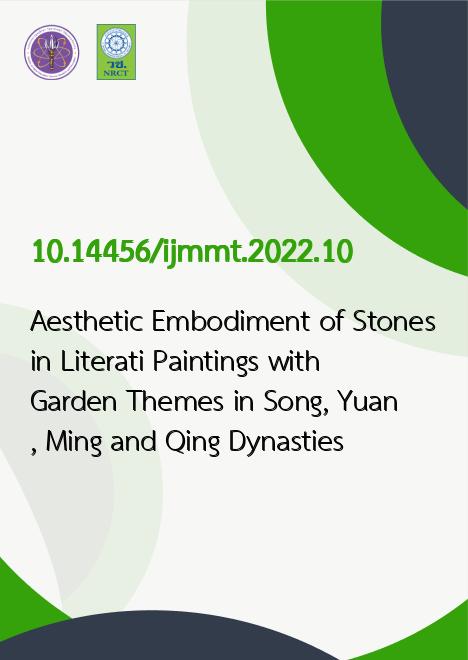
|
Aesthetic Embodiment of Stones in Literati Paintings with Garden Themes in Song, Yuan, Ming and Qing Dynasties |
|---|---|
| รหัสดีโอไอ | |
| Creator | Shuang Wang |
| Title | Aesthetic Embodiment of Stones in Literati Paintings with Garden Themes in Song, Yuan, Ming and Qing Dynasties |
| Contributor | Sakon Phungamdee |
| Publisher | Luangporyai Association |
| Publication Year | 2565 |
| Journal Title | International Journal of Multidisciplinary in Management and Tourism |
| Journal Vol. | 6 |
| Journal No. | 2 |
| Page no. | 113-128 |
| Keyword | Aesthetic embodiment, Literati painting, Stones, Song/Yuan/Ming and Qing Dynasties |
| URL Website | https://so03.tci-thaijo.org/index.php/ijmmt |
| Website title | https://so03.tci-thaijo.org/index.php/ijmmt |
| ISSN | 2730-3306 |
| Abstract | The emergence and development of Chinese classical gardens and landscape paintings with garden themes complement each other. Chinese classical gardens originated in ancient times, flourished in the Tang and Song Dynasties and declined in the late Qing Dynasty. It is an essential carrier of Chinese culture and philosophy and reposes the countless reveries of the ancients about nature and themselves. As a branch of landscape painting, garden landscape painting not only reproduces the garden landscape but also becomes a means for the ancients to explore the relationship between man and nature and externalize philosophy into sensible things.This paper considers the typical classical garden theme literati paintings of the four dynasties of Song, Yuan, Ming and Qing Dynasty as the starting point and takes the stone in the paintings as the research object. By comparing different paintings, combined with the background of the Song, Yuan, Ming and Qing Dynasties, this paper systematically studies the works with the theme of garden rocks in literati paintings. Analyze the creation techniques, composition layout, material, brush and ink application of stones in different dynasties.On the one hand, the research on landscape painting with a garden theme can further broaden the research field of landscape painting; on the other hand, it can also promote development. |